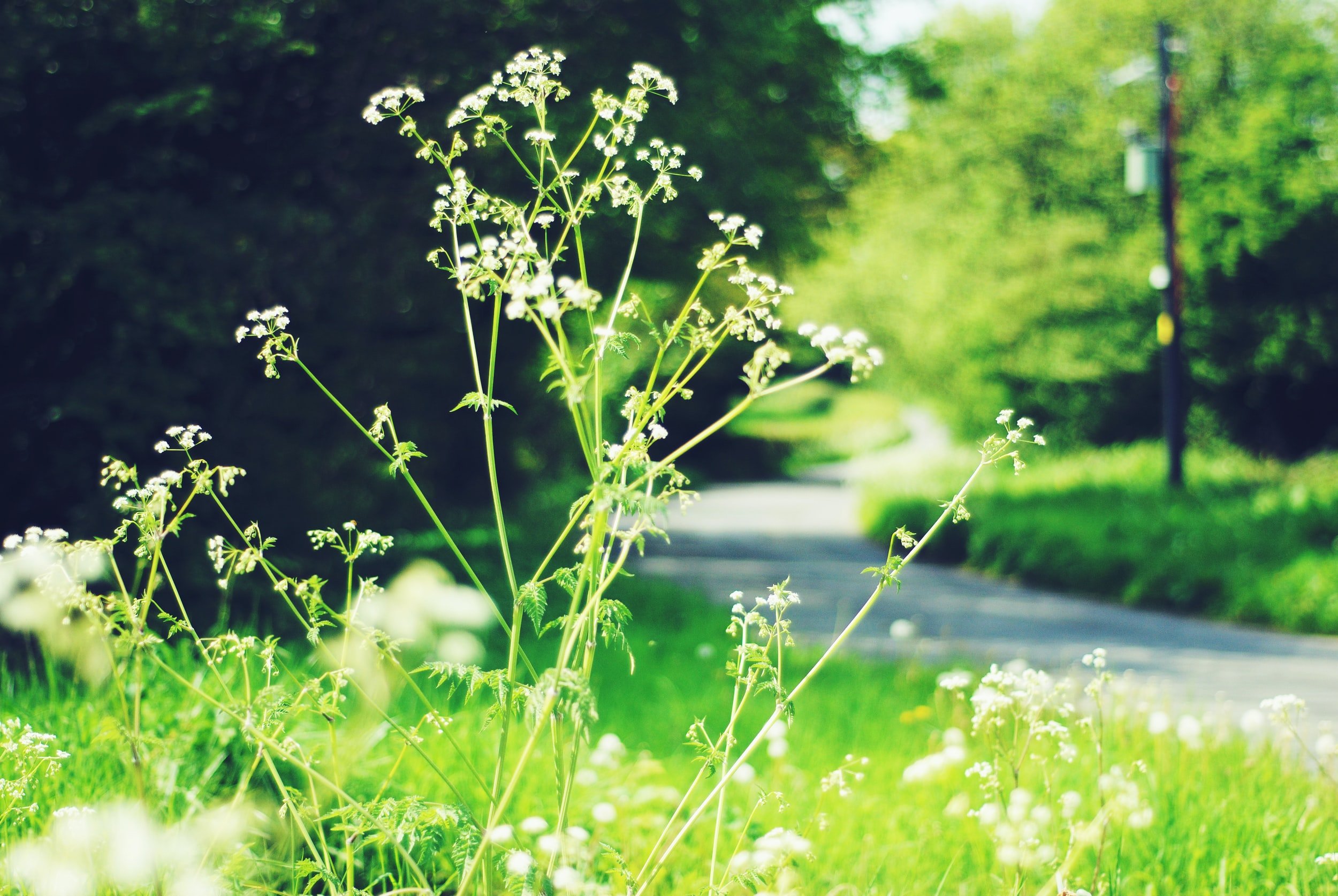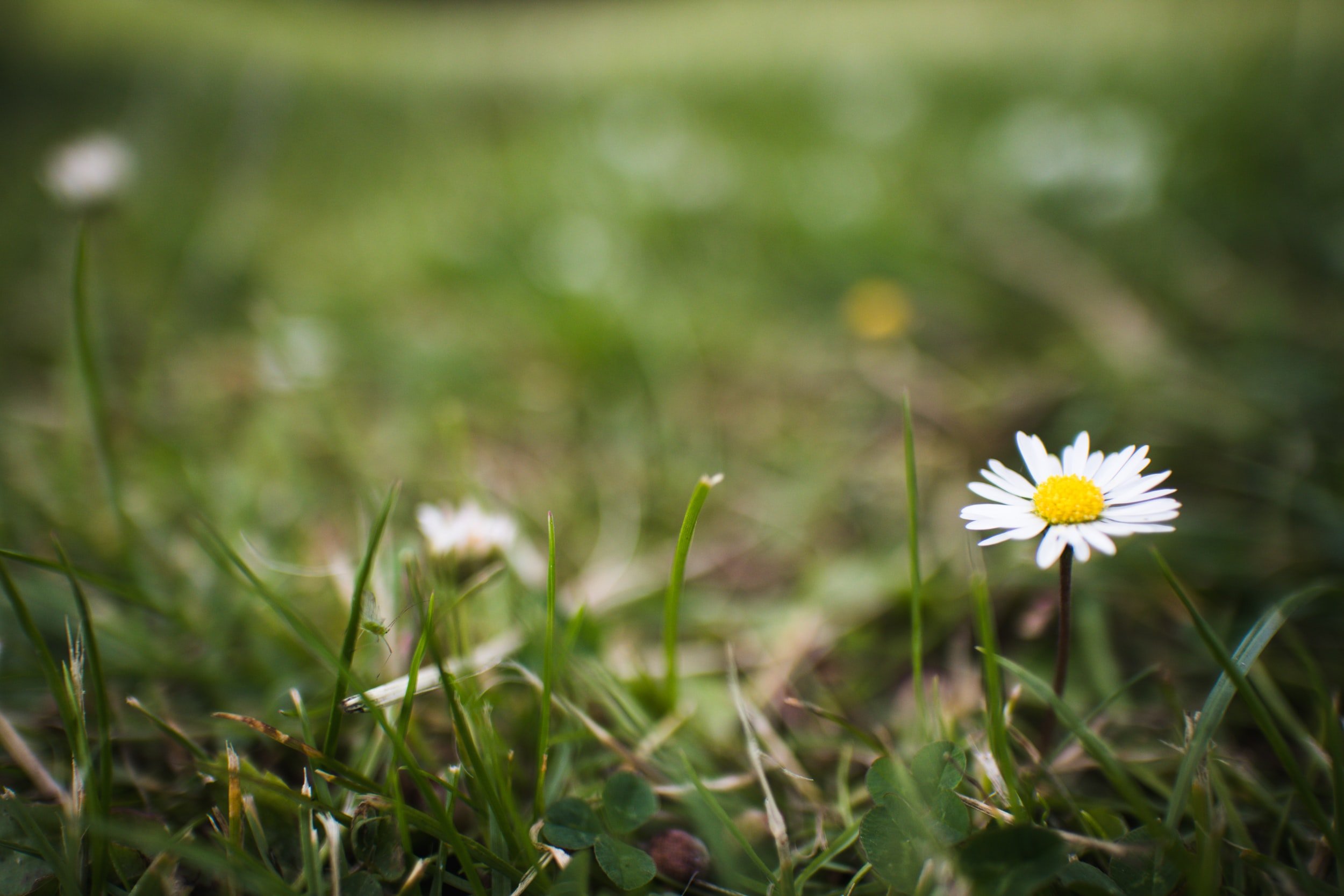
pardon the weeds
One person's weed is another's best friend. That's certainly true for many of the weeds that are found in backyards around the country. While some gardeners labor to rid their patches of earth of any stray stem or sprout, they might do well to live and let live. At least, that's the case for a handful of weeds that boast a bevy of benefits, from attracting pollinators to repelling pests, and from fertilizing soil to filling a salad plate.
Of course, some weeds, like the dreaded kudzu vine, are more destructive than others. But in many cases, a weed is only a weed because it’s in the wrong place at the wrong time. For instance, yummy mint grown outside of a container can quickly take over a garden, turning into a gardener’s worst enemy. Neatly relegated to a pot, it becomes a beloved kitchen herb.
Learn more about some of the most common weeds, why and how we get rid of them has negative impacts and what you can do about it.
THE PESTICIDE PROBLEM
Arguably more important than whether or not you decide to leave the weeds in your outdoor spaces is how they are removed.
More than 95% of a pesticide application does not reach its actual target, but ends up in our waterways, killing other organisms and harming ourselves. Organic pesticides are generally safer for humans, but can be just as fatal for other organisms. The great success of pesticides is the probable reason that, in the last 20 years, the worldwide bee population has declined by 40% since the 1970s, and the butterfly population by 60%. Bird populations that rely on these pollinators to feed their young, and humans who depend on the same pollinators to grow our food, are impacted too.
Pesticide use is linked to canine and human cancers, hormone imbalances and neurological impairments. Yet, American homeowners purchase more than one billion pounds of pesticides and herbicides every year. This has caused our lawns to become the largest, most toxic, ‘crop’ in the USA. While many countries have drastically limited or banned the use of these harmful pesticides, the US government is relaxing its safety requirements, and postponing consideration of the possible dangers of these chemicals.
Healthy yards really don’t need pesticides. In fact, regular pesticides applications damage soil health and will eventually stunt growth. In addition, pesticides can create a deadly cycle by doing exactly the opposite of what they were intended to do: causing growth of pests by eliminating the natural predators of those pests. For temporary problems with insects and diseases, there are often natural, less harmful solutions. If you have plants that are repeatedly attacked by pests, you should consider replacing them with more resilient species.
DANDELIONS (and some good reasons to let the yellow blooms stick around)
Sure, they multiply without thinking twice about the fact that they’re populating your lawn. But the weedy flowers have some benefits. Some might even consider them pretty to look at. Next time you’re tempted to mow over a patch of yellow-topped dandelions, you might want to pause because of these three good reasons to keep them around.
Food for Beneficial Bugs
Despite what many people think, dandelions aren’t the first and only flowers to bloom in the spring. Crocus, hyacinth, and muscari, for instance, are other early spring flowers that serve as a source of food for pollinators. That said, because they spread so readily, dandelions are a welcome food source in areas where pollen and nectar are scarce.
Ideally, bees and other pollinators should have access to various flowers on which to feed because dandelions aren’t a high-quality food source. Planting a variety of native perennials with different bloom times ensures that pollinators have consistent access to food.
At the very least, it’s important to avoid spraying dandelions with pesticides and herbicides since this exposes hungry insects to harmful toxins and can even kill sensitive bees.
Soil Improvement
Dandelions aren’t just a potential food source for beneficial insects. They also help improve the soil. Their long taproots are a reason gardeners find dandelions so hard to eradicate. However, the lengthy roots are also excellent soil aerators that help loosen up compacted soil. Just the presence of dandelions also alert you to potential problems with your soil, such as infertility.
They’re Edible
Yes, you can eat dandelions! Keep them around, harvest them, and take advantage of their numerous medicinal qualities. People commonly use the roots to brew tea, but the plant is edible from taproot to top. The nutritious weeds contain high amounts of vitamin A, C, and K, along with several minerals such as calcium.
Studies suggest that dandelions, apart from being full of good-for-you vitamins and minerals, also might help fight inflammation in the body, control blood sugar, and regulate cholesterol and blood pressure. Some people drink dandelion tea to help settle an upset stomach and treat constipation.
Careful, though. If you’re prone to springtime pollen allergies, you might want to handle dandelions with gloves to avoid a potential skin rash. Additionally, it’s best to talk to your doctor before taking any kind of supplement, homegrown dandelions included.
They’re Fun
And at the end of the day, dandelions are just plain fun. The dandelion seems to be the flower earmarked for children: In a park or garden, it’s the only flower a kid can pick without getting into trouble. A child in a field full of dandelions can practically never run out of things to do.
Dandelions probably will never be eradicated, but we can learn to be more at ease with dandelions and other wild things – and maybe even to love them a little.
Worried about Invasive Species?
It is always good to be aware of the invasive tendencies of some plant species in your locale.
The bachelor’s button or cornflower (Centauria cyanus), for instance, is a well-behaved garden plant across much of the U.S., but in parts of the Pacific Northwest, it has become a naturalized, undesirable weed.
If in doubt, please check with your county Extension agent or review the link below.
ALTERNATIVE USES OF WEEDS
Though we often eradicate weeds from our lawns and gardens, they are actually a useful and underutilized resource. Many weeds are edible and can be used to diversify our diet, while other weeds have medicinal properties. Instead of spraying them, we can take advantage of finding weeds in our yards and put them to good use.
*Warning: some people may have allergic reactions to consuming and/or touching weeds. Be cautious with handling weeds, and only start eating them in small amounts.
-
Dandelions
Both the leaves and flowers of dandelions are edible. The greens, though slightly bitter, can be eaten raw, added to a salad, or steamed. Dandelion flowers are sweeter than the leaves, and can be eaten raw or cooked.

-
Plantain
A broad leafed weed, is both edible and medicinal. The young leaves can be eaten raw, steamed, boiled, sautéed, or made into a tea. The leaves can be crushed and applied topically for insect bites or minor burn relief.

-
Clover
An important food source for bees and other pollinators. Clover flowers, both red and white, can be dried to make tea. Additionally, clover leaves are edible and can be added to salads.

take it a step further
Not using fertilizers and leaving some flowering weeds for the bees but want to have a stunning garden all year long?
Learn more about gardening for native bees in Utah and beyond with this comprehensive list and planting guide from our friends at Utah State University.
Stop by a greenhouse where we would love to help you pick out the perfect blooming plants to beautify your space and feed our flying friends.

“A weed is but a plant whose virtues remain undiscovered.”
— Ralph Waldo Emerson
Sources:
Maine Organic Farmers and Gardeners
Rural Sprout
Utah State University
Bob Vila: Steph Coelho








